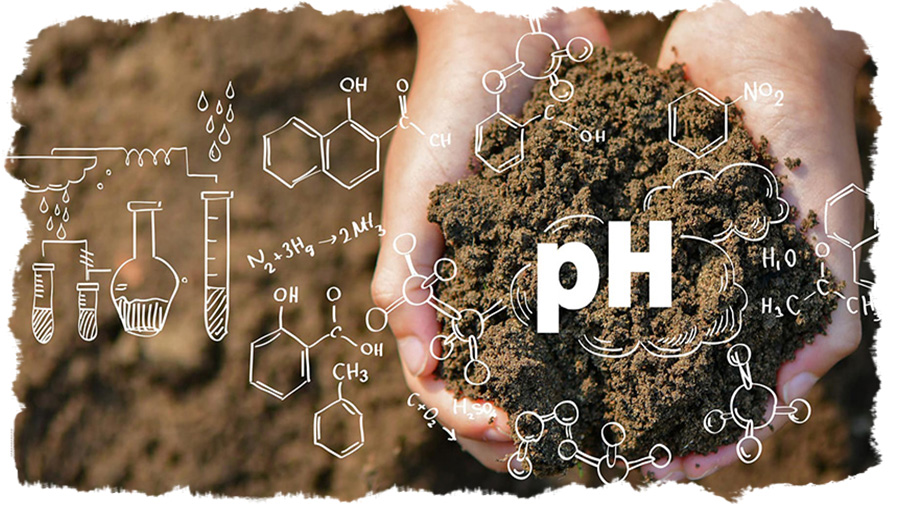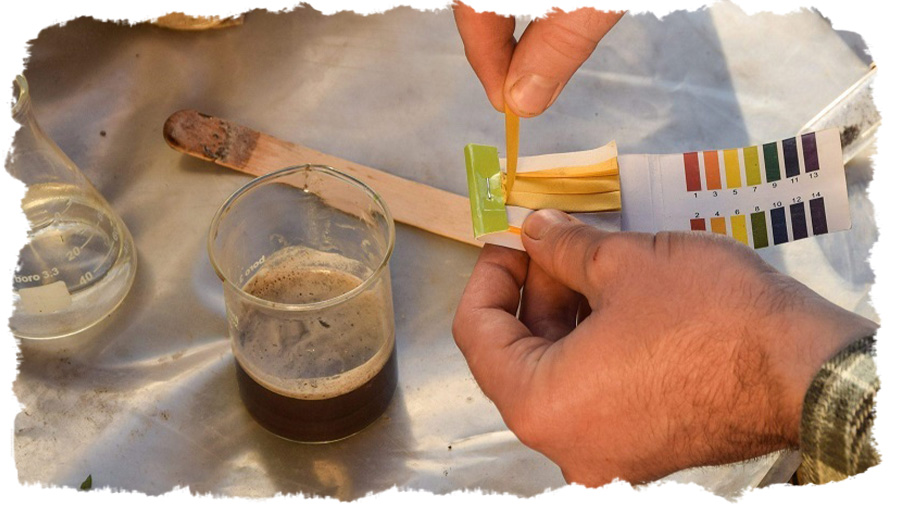
Practical Ways for Modifying and Adjusting Soil pH
Soil pH is one of the single most important properties of garden and farm soil. It controls which nutrients are available to plants, which microbes thrive, and how soil structure behaves, and that directly affects yields, plant health, and fertilizer efficiency. Let’s see why pH matters, how to measure it correctly, and what the practical ways are to raise or lower pH. We also introduce modern tools you can use and safe, science-backed best practices. By adjusting soil pH through amendments such as adding lime (to increase pH) or sulfur (to decrease pH) and other minerals and chemicals, farmers can optimize soil conditions for their specific crops and maximize crop performance.
Why Is Adjusting Soil pH Needed?
Adjusting soil pH is important for agriculture for several reasons:

- Nutrient Availability: Most vegetables and field crops prefer slightly acidic to near-neutral soils, roughly pH 6.0–7.0, where macronutrients (N, P, K) and important micronutrients are most available. Outside that band, some nutrients become “locked up” and others (like aluminum or manganese in very acid soils) become toxic.
- Microbial activity: Beneficial bacteria and fungi that decompose organic matter and cycle nutrients are sensitive to pH; optimal microbial activity usually tracks the same 6–7 pH range.
- Soil structure: Soil pH can affect soil physical properties such as compaction and porosity. Optimal pH levels create stable soil aggregates that improve soil aeration, water penetration, and root penetration.
- Product-Specific Requirements: Some crops (blueberries, azaleas) require acidic soils; others) do best closer to neutral. Matching pH to the crop is often the simplest yield booster you can apply. For example, plum trees thrive in acidic soils, while alfalfa and tomatoes prefer slightly alkaline conditions. Adjusting soil pH to match crop needs ensures optimal growth and productivity.
- Reduced toxicity: High pH levels can increase the solubility and availability of potentially toxic elements such as aluminum, manganese, and heavy metals. Adjusting the pH can help reduce the toxicity of these elements and create a more favorable growing environment for plants.
Measure First- Accurate pH Testing Is Non-Negotiable
Before adding anything, consider soil testing. Cheap home kits and digital pH meters are useful for quick reads, but for reliable action plans, you should: collect composite samples from the planting zone (multiple spots mixed together), send them to a soil lab, and request both pH and buffer pH or lime requirement. Labs give prescription-style recommendations (how much lime to apply to raise pH to a target), which protects you from under- or over-amending. If you want in-field real-time reads, new sensor options are emerging; but verify their accuracy against a lab first

How to Raise Soil pH (Make It Less Acidic)
After testing, if we find that our soil is alkaline (that is, its pH is higher than 7.0), but the product we want to grow requires a more acidic environment, we can increase the amount by adding minerals and chemicals to the soil. Reduce the pH of the soil and adjust the pH of the soil.
We can use the following solutions to reduce soil pH (increase acidity):
Use of sulfur:
Adding sulfur to the soil produces sulfuric acid and lowers the pH. To achieve the desired effect, sulfur should be added gradually and according to soil tests. For this purpose, fertilizers such as sulfate can be used. When dissolved in the soil, sulfate turns into ammonium (NH4+), which leads to an increase in soil acidity.
Use of organic fertilizers:
Organic fertilizers such as vermicompost, peat moss, and cow manure can lower soil pH. These fertilizers increase acidity by producing organic acids and increasing the activity of soil microorganisms.
Use of nitrogen fertilizers:
Nitrogenous fertilizers such as ammonium sulfate and ammonium nitrate reduce soil pH after breaking down into weak acids. These fertilizers should be used carefully and according to the plant’s needs.
Use of acids:
Sulfuric acid, phosphoric acid, and nitric acid can lower soil pH. This method should be done carefully and based on soil tests to avoid damage to the plant.
In any method, the amount and time of use of modifiers should be adjusted according to the soil test results and the plant’s needs to achieve the best results.
How to Lower Soil pH (Make It More Acidic)
But what can we do if we find out that the soil is too acidic after the test? As there are solutions to reduce the soil’s alkalinity, there are also effective solutions to reduce the soil’s acidity.
Use of lime (calcium carbonate):
Adding lime to soil neutralizes acids and increases pH. The amount of lime required should be determined based on soil testing.
Use of other lime materials:
Other calcareous materials, such as dolomite (calcium and magnesium carbonate) and zeolite, can also increase pH and improve the soil’s physical and chemical properties.
Use of alkaline fertilizers:
Alkaline fertilizers such as potassium sulfate, magnesium sulfate, and sodium nitrate can increase pH. These fertilizers reduce acidity by providing alkaline cations in the soil.
Use of organic materials:
Adding organic matter such as compost, vermicompost and peat moss to the soil can increase the pH. These organic materials increase the buffering properties of the soil by producing alkaline compounds.
- Important point: Here, the question may arise: Why is the use of organic materials such as vermicompost recommended both to increase soil pH and to decrease soil pH? No mistake has occurred! The initial condition of the soil determines how organic fertilizers work.
- Increasing pH (reducing acidity): In acidic soils (with low pH), adding organic fertilizer to the soil increases pH and reduces acidity.
Reducing pH (increasing acidity): Organic fertilizers usually contain humic and fulvic acids, which can reduce pH after decomposition in the soil. Consequently, in alkaline (high pH) soils, adding these substances can lower the pH.

New & Promising Tools for Adjusting Soil pH
- Soil sensors and precision tools. A growing set of field sensors; from handheld probes to wireless networks and biodegradable sensor chips; offer quicker pH mapping for precision amendments. These tools are improving fast, but verify them with lab tests and use them for spatial guidance rather than absolute diagnosis until validated.
- Enhanced rock weathering (crushed basalt). Research shows spreading basalt rock dust can slowly raise pH in acidic soils, supply trace nutrients, and sequester CO₂ as weathering reactions proceed. It’s not yet a routine practice for small gardeners, but large-scale trials (and investment) are accelerating the science and commercialization for farms. If you’re curious about co-benefits (pH moderation + carbon removal), follow recent field studies and extension updates.
Practical Step-By-Step Checklist for Adjusting Soil pH
- Test your soil (lab preferred). Get pH, buffer pH, and basic fertility.
- Define crop targets. Know the ideal pH for the crop you plan to grow.
- Follow lab or extension recommendations. Use their lime/sulfur rates rather than guessing (Clemson, Cornell, and local extensions provide calculators and tables).
- Time your applications. Lime in fall for best incorporation; sulfur well in advance of planting to allow conversion.
- Incorporate and re-test. Mix amendments into the root zone where practical and re-test in 3–6 months.
Final Notes: Safety, Sustainability, & ROI
- Don’t overdo it. Over-liming or excessive acidification can lock out nutrients and stress plants. University extension guidance exists to prevent that.
- Think long term. Organic matter, cover crops, and good nutrient management keep pH stable and reduce the frequency of heavy corrective amendments.
- Consider scale and cost. For acres, lime and rock dust calculations are done in tons; for containers and small beds, use measured hand applications. If carbon benefits matter to you, monitor research on enhanced weathering before committing large investments.
Conclusion
Adjusting soil pH is one of the highest-leverage, cost-effective ways to improve plant performance. Test first, follow extension guidance, apply amendments deliberately, and re-test, and you’ll see healthier plants, fewer nutrient headaches, and better returns on fertilizer and time. Want a crop-specific plan (e.g., vegetables, blueberries, or corn) or a simple worksheet to calculate lime/sulfur needs from your soil test? Tell me the crop and your soil test numbers, and I’ll draft a tailored action plan.
